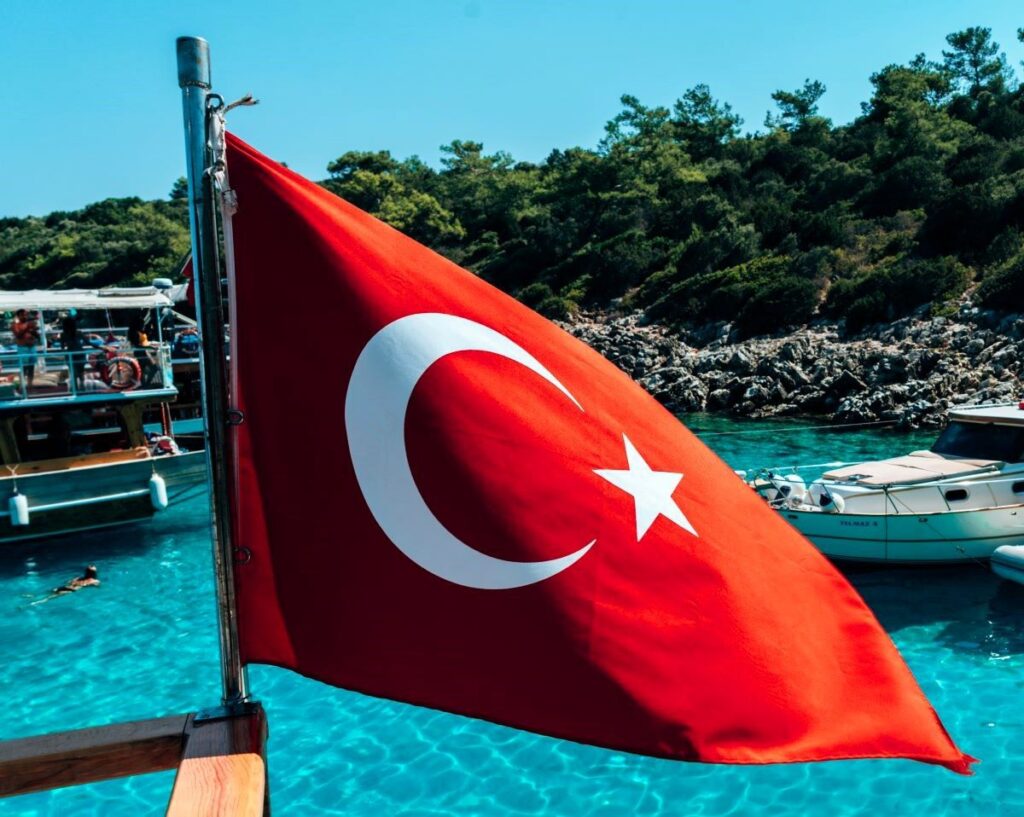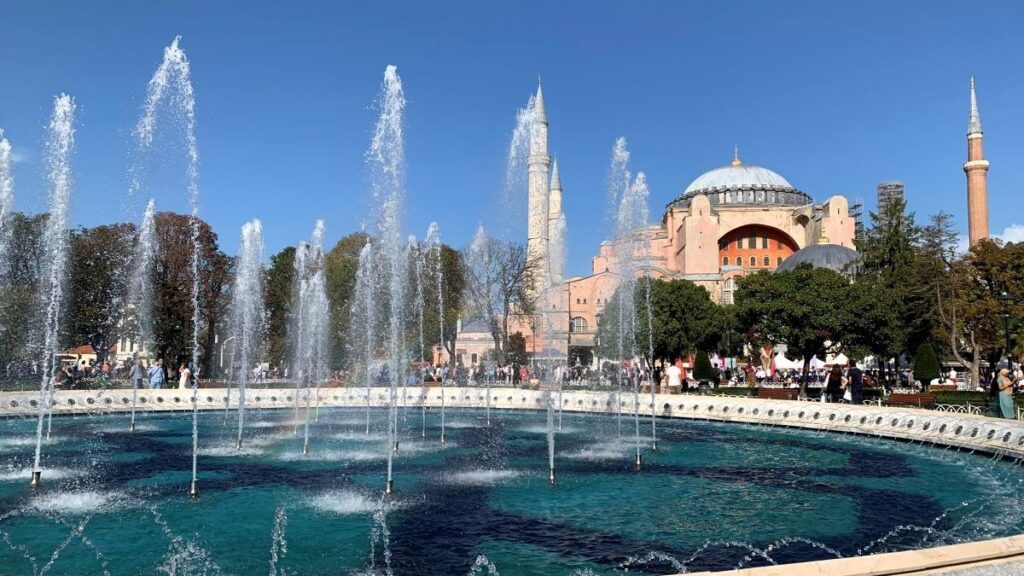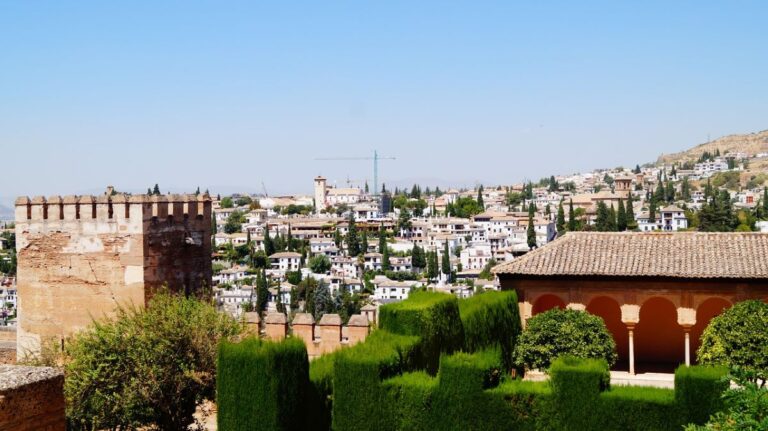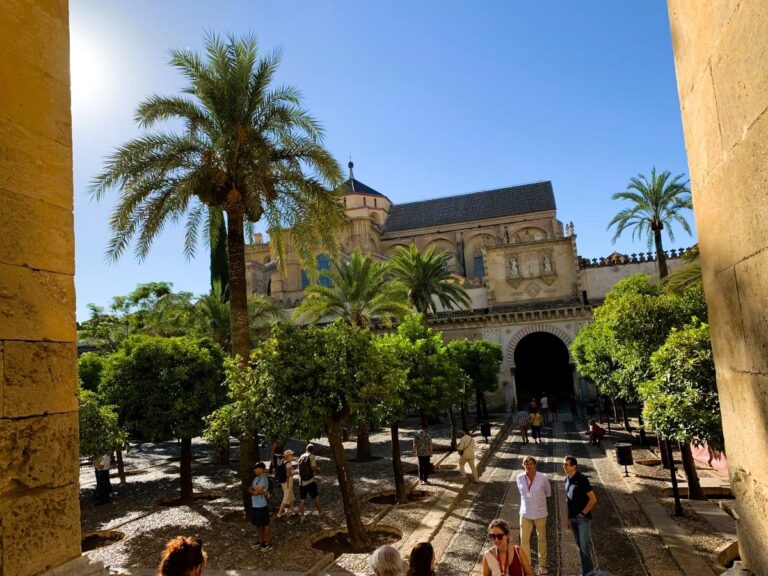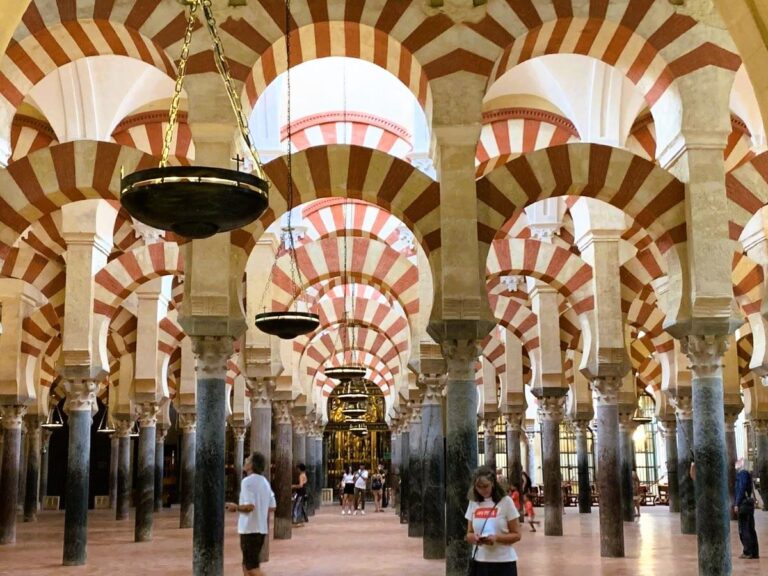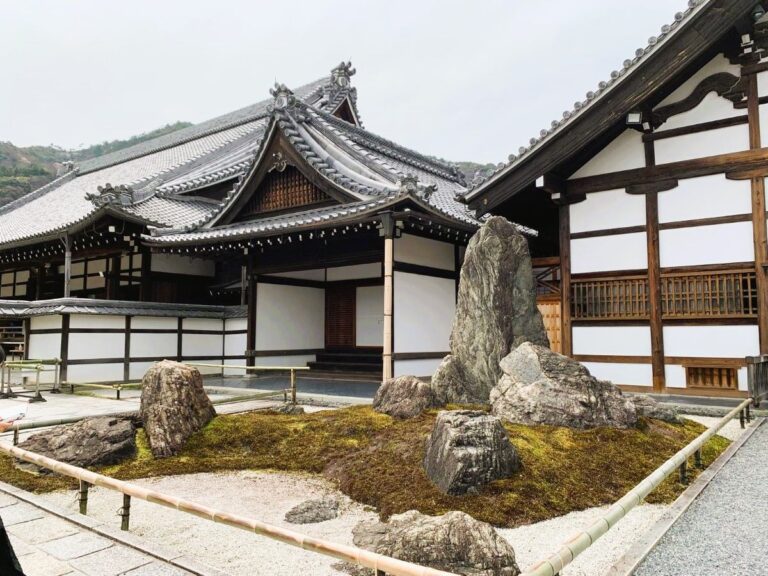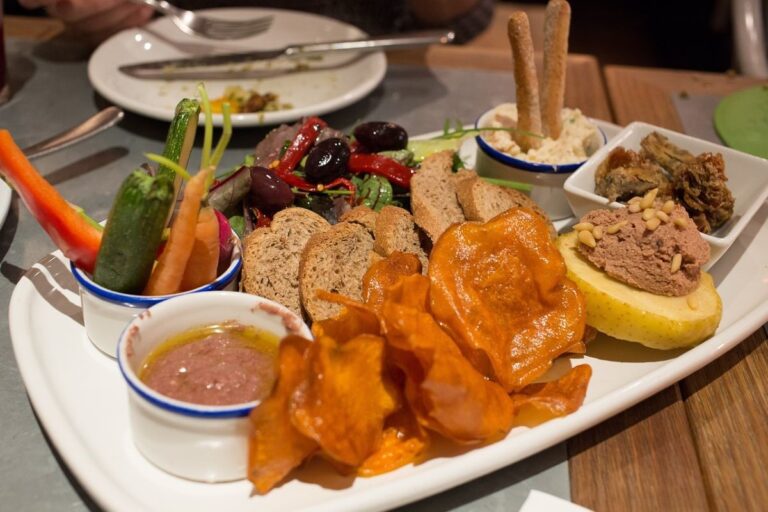Whirling Dervishes in Istanbul: A Spiritual Journey You Can’t Miss

The Whirling Dervishes in Istanbul offer an experience unlike any other. Rooted in the teachings of Rumi and the Sufi Mevlevi Order, their hypnotic spinning is a deeply spiritual act symbolizing the path to divine love.
My interest in Sufism goes back many decades. I had a cousin who was a practicing Sufi, and he introduced me to it and the teachings of Jelaleddin Rumi. So, when we planned our trip to Istanbul, attending an authentic whirling dervish performance was high on our list.
While researching the trip, my wife and I came across something on Google that caught our attention – Mevlana Lovers Foundation, officially known as the Evrensel Mevlana Aşıkları Vakfı (EMAV). It’s a cultural and spiritual organization based in Istanbul. Their mission is to spread Rumi’s teachings, the essence of which is UNITY AND DIVINE LOVE.
EMAV conducts various activities to keep Rumi’s philosophy alive, including organizing conferences, seminars, Sufi music concerts, and Sema ceremonies—traditional whirling dervish performances symbolizing spiritual ascent.
We contacted them by email and were able to secure 2 tickets. Their email response to us was so welcoming. It not only included information on what to expect at the ceremony but also details on how to get to the venue.
The cost was $25 per person which we could pay when we arrived there. It was perfect!
Despite the directions I have to admit that we did get a bit lost. It was tricky. We had to ask someone on the street, and he kindly walked us to it.
It turned out to be a beautiful Ceremony! We were finally able to witness the most authentic Whirling Dervishes in Istanbul.
Related Posts:
What Does Dervish Mean? Who Are They?
If you’re curious to witness the physical and spiritual connection of the Whirling Dervishes, consider attending a ceremony at an authentic location like the Galata Mevlevihanesi.
Spiritual Rebirth
Watch this video from Culture Trip: The Whirling Dervishes – Dancing to Get Closer to God – Listen to the Words of Rumi
The word “dervish” (Turkish: derviş, Persian: درویش, Arabic: درويش) refers to a member of a Sufi Islamic order (tariqa) who follows a path of spiritual discipline, asceticism, and devotion to God. Dervishes are often associated with poverty, humility, and detachment from material wealth, as they seek closeness to the Divine through prayer, meditation, and service.
The term is often linked to wandering mystics or ascetics who travel in search of spiritual wisdom, much like Christian monks or Hindu sadhus.
Historical Origins of the Whirling Dervishes
The hypnotic spinning of the Whirling Dervishes in Istanbul traces its roots to the profound teachings of Jelaleddin Rumi. These origins highlight a spiritual journey that began in the heart of Anatolia and expanded over centuries, leaving an indelible mark on Istanbul’s cultural and spiritual landscape.
To truly appreciate the Whirling Dervishes, we must first explore their beginnings.
Jelaleddin Rumi and the Mevlevi Order
Jelaleddin Rumi, more commonly known as Rumi, was a 13th-century Persian poet, Islamic scholar, and Sufi mystic whose teachings formed the cornerstone of the Mevlevi Order.
Rumi believed in the power of transcending earthly attachments to connect with divine love. His philosophy centered on themes of unity, love, and the endless search for spiritual enlightenment.
Many consider his poetry timeless, layered with meaning, and widely cherished for its universal appeal.
The Mevlevi Order was officially established after Rumi’s death in 1273 by his son Sultan Veled and his followers. This spiritual order sought to preserve and share Rumi’s ideals, especially his vision of achieving closeness to God through music, dance, and poetry.
Most notably, they popularized the practice of Sema, a ceremonial dance in which participants whirl as a meditation prayer. This is the iconic image that many associate with the Whirling Dervishes today.
Rumi’s teachings continue to inspire millions worldwide. If you want to dive deeper into the origins of the Mevlevi Order, visit Rumi’s biography or explore this comprehensive history of the Mevlevi Order.
If you’re interested in Rumi’s spiritual poetry, I highly recommend The Essential Rumi translated by Coleman Barks.
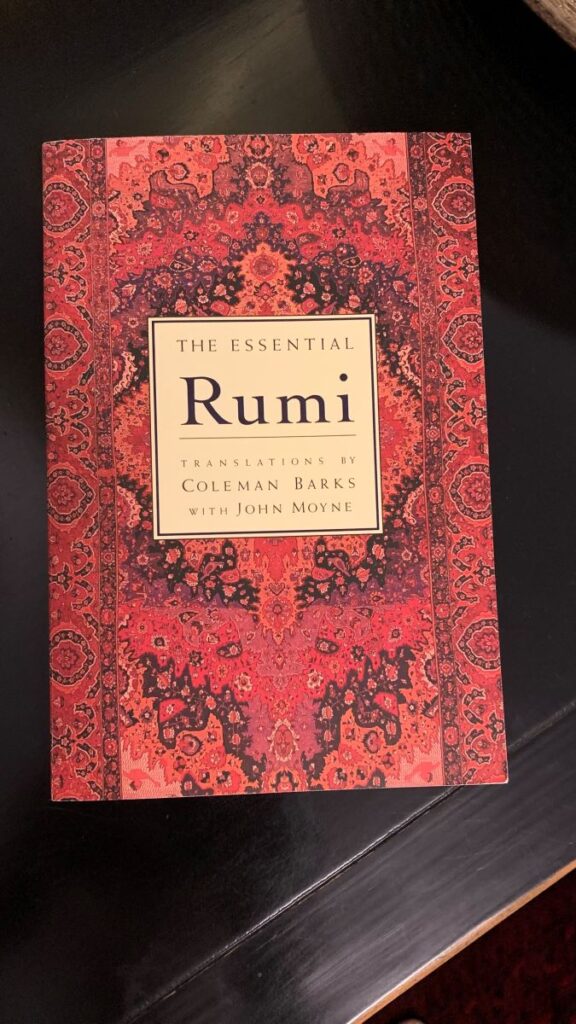
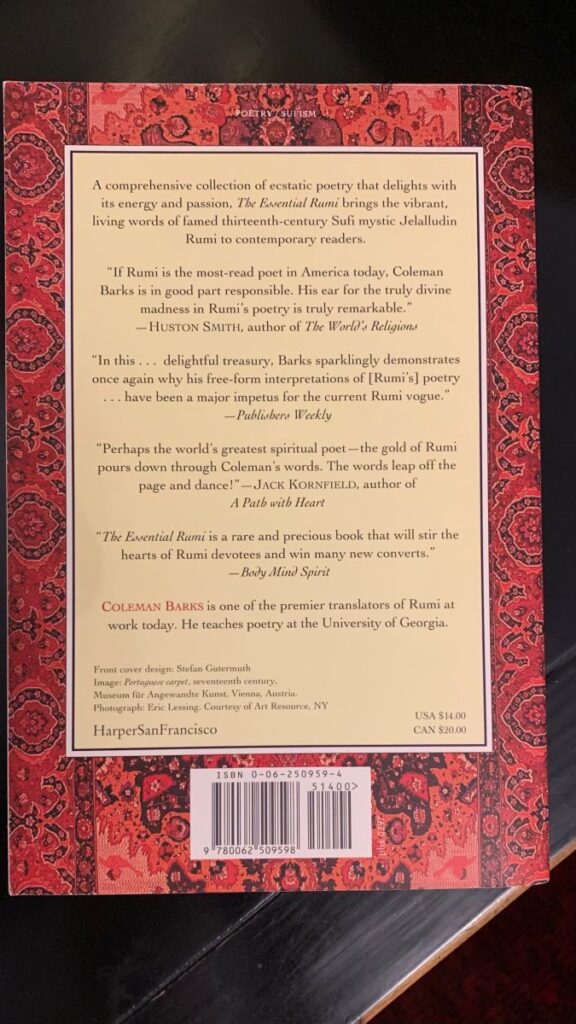
Expansion to Istanbul
The journey of the Mevlevi Order from its origin in Konya (a city in central Turkiye) to its prominence in Istanbul demonstrates its significant influence across Ottoman culture.
As the Ottoman Empire expanded, it became common for rulers to adopt and support spiritual orders. By the late 15th century, Istanbul, then the administrative and cultural center of the Empire, became a thriving hub for the Mevlevi Order.
The Mevlevis established several Mevlevihanes (lodges) throughout Istanbul. These lodges were not mere prayer houses—they became centers for poetry, music, and art, contributing to Istanbul’s rich cultural fabric.
One of the most famous lodges is the Galata Mevlevihanesi, which stands as a testament to the order’s enduring legacy in the city.
The Yenikapı Mevlevihane also gained renown for hosting grand Sema ceremonies.
Over time, Istanbul became synonymous with the Mevlevi Order, embracing its values of unity and peace. To this day, the rituals of the Whirling Dervishes remain a key part of Istanbul’s heritage, attracting visitors from all over the world.
You can learn more about their expansion and influence by visiting resources like About the Mevlevi Order or exploring details of the Mevlevi Order in practice.
The Whirling Dervishes we see in Istanbul today are not only keeping a spiritual tradition alive but also honoring centuries of history that connected mystical Sufism with the cultural evolution of one of the world’s great cities.
Symbolism in the Sema Ceremony
The Sema ceremony, performed by the Whirling Dervishes, is far more than an artistic display. Every movement, garment, and gesture in this mystical ritual holds profound spiritual meaning.
Rooted in Sufi traditions, the symbolism within the Sema represents humanity’s journey to connect with the divine.
Let’s explore how the symbols used in this sacred practice convey transformation and rebirth.
The Camel-Hair Hat and White Robe
The distinctive attire of a Whirling Dervish is steeped in sacred meaning. The camel-hair hat, known as a sikke, is no ordinary piece of clothing. It acts as a somber reminder—a metaphorical tombstone of the ego. For Sufis engaging in the practice, the ego is seen as an obstacle that must be transcended to achieve true spiritual connection.
Complementing the sikke is the white robe, or tennure, which symbolizes the shroud of the ego. Together, these garments represent letting go of worldly attachments and embracing humility.
It’s a way of saying that the ego must “die” before one can open their heart to divine love. These traditional symbols remind us of the impermanence of life and the ultimate goal of spiritual awakening.
For more insights into the meaning of the garments, you can explore resources like this detailed explanation on the Sema.
The Act of Whirling
Watching a Whirling Dervish perform is captivating, but the movements mean much more than they appear. The act of whirling is a deeply meditative practice. The dervish spins gracefully around their left foot, which signifies anchoring oneself to the earth while maintaining a spiritual connection. This balance is essential for Sufis, who believe in bridging the physical and divine worlds during the ceremony.
One of the most iconic gestures is the open position of the arms. The right hand is extended upward, reaching toward the heavens to receive God’s blessings. Meanwhile, the left hand is turned downward, symbolizing a willingness to pass those blessings to the earth and humanity. This posture reflects a vital tenet of Sufi philosophy: serving oneself and others through divine love.
Perhaps the most powerful moment in the Sema ceremony is the shedding of the black cloak, or hırka.
At the start, the dervishes wear this cloak as they enter the practice space. As the ritual progresses, they remove it—a deeply significant act symbolizing spiritual rebirth.
Think of it as shedding one’s old self, much like a butterfly leaving its cocoon. By removing the hırka, the dervishes transition into a divine state of being, where they are free to embrace their connection to God fully. It’s a moment that represents not just personal renewal but also the universal cycle of life, death, and rebirth.
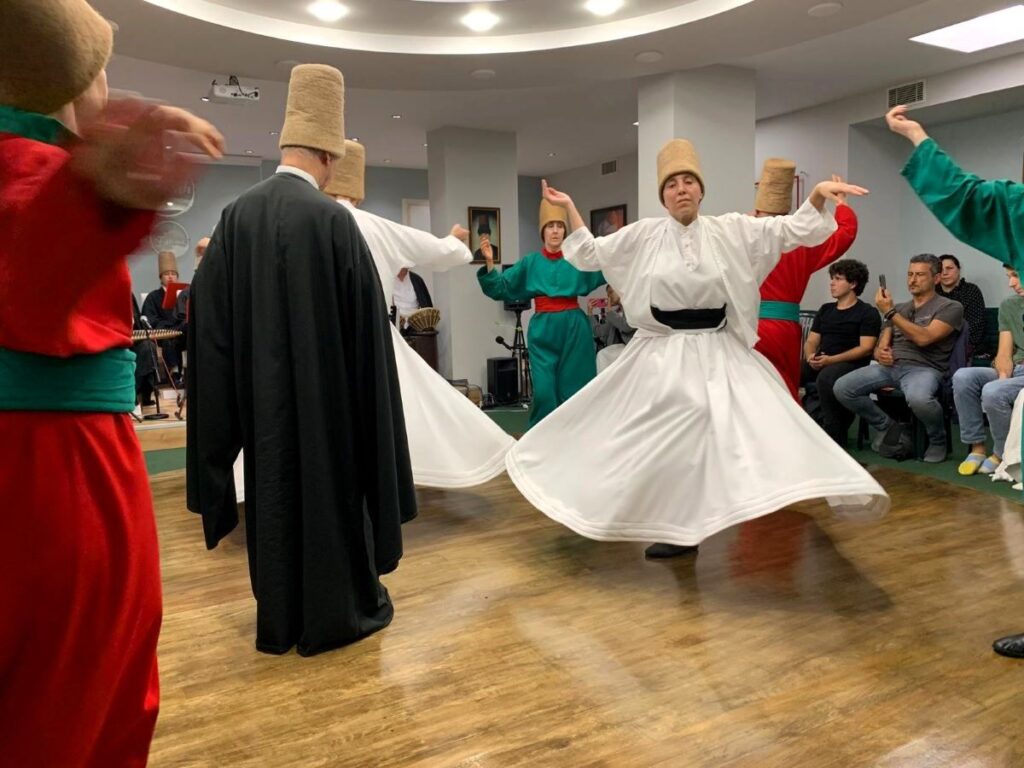
For more on the profound meaning behind the Sema ceremony’s elements, check out this exploration of the spiritual foundations of the Whirling Dervishes.
Sema Ceremony: Structure and Experience
The Sema ceremony, a hallmark of the Whirling Dervishes, is a sacred act of spiritual devotion not just a performance.
Every aspect, from the solemn movements to the carefully orchestrated music, mirrors a journey toward divine love and connection.
Let’s break down the components of this fascinating ceremony to better understand its depth.
The Selams (Segments)
In the Sema Ceremony, the whirling dervishes follow a structured ritual divided into seven Selams (segments), each with deep spiritual significance. These Selams represent different stages of the dervish’s journey toward divine love and unity with God. Here’s an overview:
- Naat-ı Şerif and Taksim (Praise & Musical Prelude)
- The ceremony begins with a recitation of the Naat-ı Şerif, a poem in praise of Prophet Muhammad, followed by a Taksim (an improvisational ney solo). The ney (reed flute) symbolizes the soul’s longing for reunion with the divine.
- Devr-i Veled (Processional Walk)
- The dervishes, wearing long white robes (symbolizing the burial shroud of the ego) and tall hats (representing tombstones of the self), walk in a circular procession three times, symbolizing their journey from the material world to the spiritual realm.
- First Selam: The Awakening
- The whirling begins, representing the dervishes’ acknowledgment of God as the Creator and their submission to divine will. This marks the awareness of human servanthood before the divine.
- Second Selam: The Journey of Knowledge
- The dervishes deepen their spiritual connection by recognizing the grandeur of divine creation and striving to gain knowledge of God through love.
- Third Selam: The Ecstasy of Divine Love
- The dervishes reach a state of spiritual ecstasy, symbolizing their complete surrender to divine love, where the individual self begins to dissolve.
- Fourth Selam: The Reunion with the Divine
- The climax of the Sema represents the union with God (Fenâ Fillâh – annihilation of the self in God). This is the moment when the dervishes have transcended worldly existence and achieved spiritual fulfillment.
- The Final Prayer and Recitation of the Qur’an
- The Sema concludes with a recitation from the Qur’an, followed by a prayer for peace and blessings upon all of humanity. The dervishes then leave the Sema in silence, signifying their return to daily life with a renewed spiritual awareness.
Each Selam is accompanied by music and movements that reinforce Rumi’s mystical philosophy. The entire ceremony symbolizes the soul’s journey toward divine love, enlightenment, and ultimately, unity with God.
Musical Accompaniment
You can’t separate the music from the soul of the Sema. The live performance—a combination of vocal hymns, flutes (ney), lutes (oud), and drums—creates an auditory atmosphere of transcendence. Often, the hymns are drawn directly from the poetry of Rumi, who himself spoke of the transformative power of music.
The flute, with its melancholy yet touching tunes, reflects the longing of the human soul for divine connection. It partners with rhythmic drumbeats that symbolize the beating heart, fueling the Dervishes’ movements. Together, these sounds lift the spirit and immerse everyone in a meditative state.
Role of the Audience
The audience plays an integral, albeit quiet, role in the Sema. They aren’t mere spectators but participants in a spiritual experience.
The Dervishes perform with an awareness of their presence, sharing the energy of the moment. The stillness and meditative focus from the audience create a shared space of reverence and concentration.
By simply being present, the audience contributes to what feels like a collective prayer. Imagine everyone’s focus aligning with the spinning Dervishes—it’s a kind of silent support that heightens the ceremony’s spiritual intensity.
Even those of us unfamiliar with the deeper meanings often feel a sense of peace and connection.
The Sema ceremony, through its segments, music, and the shared connection with its audience, becomes more than a ritual. It transforms into a heartfelt journey that bridges human experience with divine love.
If you ever find yourself in Istanbul, don’t just attend—feel it.
Where to Experience Whirling Dervishes in Istanbul
Beyond the symbolism and history, knowing where to witness an authentic performance can elevate the experience.
Here’s where you can encounter this timeless ritual in Istanbul.
Evrensel Mevlana Aşıkları Vakfı (EMAV) – (This is the one that we attended as mentioned at the beginning of this post)
The Evrensel Mevlana Aşıkları Vakfı (EMAV), also known as the Universal Mevlana Lovers Foundation, hosts regular Whirling Dervish (Sema) ceremonies in Istanbul. These performances are held at their headquarters located at Şehremini Mahallesi, Küçük Saray Meydanı Caddesi, Adalan Pasajı No: 21-A/8, Fatih, Istanbul.
The foundation offers programs on Thursday and Saturday evenings, which include a previously recorded video discussion with Hasan Dede about the Mevlevi path (with English subtitles), a Sufi music concert, and the Whirling Dervish ceremony.
On Thursdays, the program starts at 7:30 PM, and on Saturdays, it begins at 7:00 PM.
To contact EMAV for more information or to inquire about attending a ceremony, you can use the following details:
- Phone: +90 (212) 588 57 80
- Mobile: +90 (552) 524 34 94
- Email: info@emav.org
- Website: https://emav.org/en/home/
It’s advisable to reach out in advance to confirm the schedule and reserve a spot, as these events can be popular among both locals and visitors.
The Galata Mevlevi Museum
The Galata Mevlevi Museum, situated on Galipdede Caddesi, is a historical treasure. As one of the oldest Mevlevi lodges in Istanbul, this venue holds a significant place in the story of the Whirling Dervishes.
Built in the late 15th century, it served as a spiritual home for the Mevlevi Order during the Ottoman era. Today, it’s a beautifully restored museum showcasing the history, music, and poetry associated with the dervishes.
What makes Galata Mevlevi Museum special is the semahane, a hall once used for ceremonies. Here, visitors can witness authentic Sema ceremonies performed weekly, typically on Sunday evenings.
This is no tourist gimmick—it’s a real continuation of the Mevlevi tradition, offering a rare glimpse into their spiritual practice.
If you’re planning to attend, it’s recommended to arrive early to secure a spot and absorb the museum’s exhibits before the performance begins.
Learn more about the schedule and tickets through the Galata Mevlevi Museum website.
Hodjapasha Dance Theater
For a unique blend of history and performance, the Hodjapasha Dance Theater is a standout location. This restored 15th-century Turkish bath, located in the Sirkeci neighborhood, has transformed into one of the city’s premier cultural hubs.
The venue’s atmosphere—arched ceilings, dim lighting, and echoes of the past—sets the perfect stage for witnessing the Whirling Dervishes.
Hodjapasha distinguishes itself with regular performances, making it easier for travelers to plan a visit. Ceremonies typically occur almost every day, providing ample opportunities to immerse yourself in the intimate environment.
Their Whirling Dervish show also often includes a small introductory exhibition on the Mevlevi tradition, giving you context before the performance begins.
This venue is especially beloved by visitors for its accessibility and comfort. If navigating a historic site like Galata feels overwhelming, Hodjapasha might be your best bet. Check their schedule or buy tickets on their official website.
Other Hidden Gems
If you prefer to avoid the tourist hotspots and seek a more intimate spiritual experience, Istanbul has lesser-known venues that might be the perfect fit. Places like smaller, active mosques or lodges offer ceremonies that draw locals rather than large crowds of visitors.
- The Fatih and Yenikapı Mevlevihanesi, located near Fatih, carry an air of authenticity often lost in busier areas. Opting for these locations brings you closer to the roots of Sufi practice, offering a glimpse into how the Whirling Dervishes connect with their spiritual heritage in their community lodges.
- Alternatively, check out quieter spaces mentioned in guides such as this resource to discover soulful ceremonies tucked within unassuming corners of Istanbul.
Attending the Whirling Dervishes ceremony is quite an experience. It’s something that I highly recommend.
Whether you opt for the historic Galata Mevlevihanesi, the atmospheric Hodjapasha, the EMAV, or a hidden neighborhood gem, each offers a unique perspective on this mesmerizing tradition.
Contemporary Relevance of the Whirling Dervishes
The Whirling Dervishes, with their timeless spinning rituals, have evolved to represent more than just a Sufi tradition. Today, they serve as a bridge between cultural heritage, spiritual reflection, and modern global appreciation.
Revival Since the 1990s
Despite their deep roots in Sufi traditions, the Whirling Dervishes faced significant challenges, particularly after Turkey’s transition to a secular state in the early 20th century. Sufi orders, including the Mevlevi Order, were suppressed, and the practice of whirling largely went underground. However, since the 1990s, the tradition has experienced a remarkable revival.
This resurgence can be credited to a broader interest in cultural preservation and global fascination with spirituality.
The government, recognizing the value of the Mevlevi heritage, began endorsing performances as a way to protect and share this rich tradition.
Events like the annual Rumi Festival in Konya brought Whirling Dervish ceremonies back into the spotlight, reconnecting people with the teachings of Rumi and the spiritual aspects of Sufism.
As these performances gained international attention, they became not only a way to preserve Mevlevi culture but also an educational medium, bringing Sufi philosophy and art to new audiences.
While some purists worry about the balance between authenticity and tourism, this revival has undeniably ensured the survival of a unique art form.
Cultural Significance Today
In modern Turkey, the Whirling Dervishes are more than just performers in a cultural showcase—they represent an integral part of the country’s identity.
Their ceremonies are a connection to the spiritual principles of love, unity, and humility rooted in Rumi’s teachings. This connection resonates deeply in Istanbul.
Today, these ceremonies attract people from all walks of life. Locals see them as a way to connect with a shared heritage, while spiritual seekers often look to the Dervishes for inspiration.
Globally, their practice has also gained recognition beyond religious contexts, influencing mindfulness, meditation, and even modern art. The serene and purposeful nature of whirling has found its place in wellness retreats and spiritual gatherings around the world.
The inclusion of Whirling Dervishes into modern Turkish culture is essential for bridging the past with the future. By integrating them into festivals, performances, and cultural events, Turkey not only celebrates the Mevlevi Order but also ensures that the depth of their spiritual message persists.
UNESCO Recognition
In 2008, the significance of the Mevlevi Sema Ceremony received prominent global acknowledgment when UNESCO designated it as a Masterpiece of the Oral and Intangible Heritage of Humanity. This recognition was a pivotal moment for the Whirling Dervishes, cementing their importance both as an art form and as a spiritual practice.
Thanks to UNESCO, efforts to preserve and promote the authentic Sema ceremony gained momentum. The recognition not only highlighted its spiritual and cultural value but also emphasized the need to protect it from commercialization. This endorsement inspired various initiatives to document, teach, and preserve the ceremony’s original meanings and practices for future generations.
By elevating the status of the Mevlevi tradition internationally, UNESCO also made the ceremony accessible to a wider audience. Visitors to Istanbul and beyond can now appreciate it not just as a tourist attraction but as an enduring symbol of humanity’s spiritual aspirations.
Through this lasting recognition, the Whirling Dervishes continue to inspire and educate people worldwide, ensuring that their sacred dance remains relevant in an ever-changing world.
Conclusion
The Whirling Dervishes of Istanbul embody a rare blend of spiritual depth, historical significance, and visual elegance. Their ceremonies are more than performances—they’re living traditions representing a journey toward divine connection and inner peace.
Witnessing this sacred practice provides a unique window into Istanbul’s cultural heart and the timeless teachings of Rumi.
Experiencing the Dervishes in one of the city’s authentic venues is an unforgettable moment.
Take a pause in your journey to feel the rhythm of their meditative spins, and let the profound energy of the Sema ceremony leave a lasting impact. Where will this connection lead you next?

